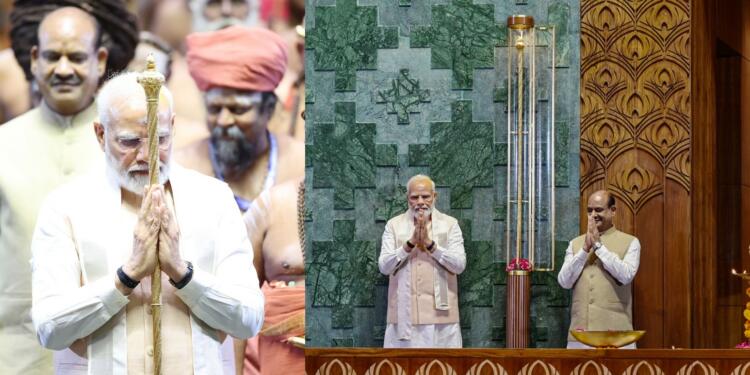In a significant move that has reverberated across the nation, Prime Minister Narendra Modi has dealt a crushing blow to decades of Dravidian propaganda by installing the Sengol in its rightful place within the New Parliament Building. This momentous decision sends a clear message to the naysayers and skeptics who doubted the Prime Minister’s vision of uniting every part of India. Spearheaded by BJP stalwart Shri K Annamalai, this symbolic act of national unification has garnered praise from leaders and cultural icons alike, heralding a new era of cultural awakening in India.
Let’s elucidate the significance of the installation of Sengol, and why this sends a clear message to the political naysayers across India.
Dravidian Rhetoric and Attempts at Derailment
The Dravidian rhetoric, which has dominated the political landscape of Tamil Nadu for decades, has often aimed to derail the process of national unification. Various attempts were made to undermine the idea of a unified India, posing a challenge to the vision of Prime Minister Modi. However, through the installation of the Sengol, PM Modi has demonstrated his unwavering commitment to inclusivity and the integration of every part of the country.
The brains behind the installation of the Sengol is the dynamic ex-IPS officer and current BJP stalwart from Tamil Nadu, Shri K Annamalai. Having personally emphasized the significance of the Sengol to PM Modi and Amit Shah during their visit to Chennai, Annamalai’s tireless efforts over the past six months have ensured that the Sengol receives its due recognition. Previously dismissed as a mere “walking stick” by some so-called intellectuals, the Sengol now stands as a symbol of justice, righteousness, and good governance, echoing the values of the illustrious Chola dynasty.
Also read: PM Modi with Sengol Rajdand – The messaging is absolutely clear with this one
The symbol of justice and righteousness
In his own words, PM Modi proclaimed, “The holy Sengol was installed in Parliament today. In the Chola dynasty, the Sengol symbolized justice, righteousness, and good governance.” This statement underlines the historical and cultural significance of the Sengol, aligning it with the principles that guide the nation’s governance today. PM Modi’s resolute action asserts the importance of preserving and honoring the diverse cultural heritage of India.
Even the revered Thalaivar, the iconic superstar Rajnikanth, expressed his admiration for this decision. He lauded PM Modi, saying, “The traditional symbol of Tamil power, the sceptre, will shine in India’s New Parliament Building. My sincere thanks to Prime Minister Narendra Modi, who made Tamilians proud.” Rajnikanth’s words reflect the sentiments of millions who see the installation of the Sengol as a moment of immense pride and cultural representation.
A Cultural Awakening
The installation of the Sengol in the New Parliament Building signifies a cultural awakening in India. It highlights the importance of recognizing and honoring the diverse cultural symbols and traditions that form the fabric of our nation. PM Modi’s visionary approach and the efforts of individuals like Shri K Annamalai have demonstrated that national unification can coexist harmoniously with regional identities and cultural pride.
The installation of the Sengol in the New Parliament Building by Prime Minister Narendra Modi is a historic moment that strikes at the heart of decades of Dravidian propaganda. This symbolic act reinforces the idea of a united India, embracing its rich cultural diversity while forging ahead with a vision of justice, righteousness, and good governance. With this gesture, PM Modi has ushered in a new era of cultural awakening, showcasing the inclusivity and unity that lies at the core of India’s identity.
Support TFI:
Support us to strengthen the ‘Right’ ideology of cultural nationalism by purchasing the best quality garments from TFI-STORE.COM































